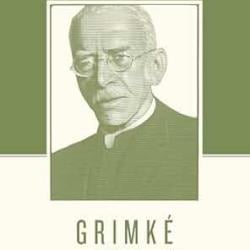Review of Riders of the Purple Sage by Zane Grey
By ALEXIS NEAL
Young, beautiful Jane Withersteen seems to have it made. She owns several thousand head of cattle, a powerful lot of land, the fastest, most beautiful pair of black racehorses in the state, and the only spring for miles around. But trouble is looking for Jane Withersteen. See, as a wealthy, unmarried Mormon woman, she’s quite the catch for the men in her community, and Elder Tull has had his eye on her for quite a while. Jane isn’t interested, but that doesn’t deter Tull one bit. And when he finds out that Jane’s been helping—and even befriending—Gentiles in the area, he decides to break Jane to his will by any means necessary. That is, until noted gunman (and noted Mormon-hater) Lassiter rides into town. Jane, devout even in the face of betrayal by her fellow churchmen, is determined to keep Lassiter from harming anyone. And Lassiter quickly decides that he will do anything it takes to protect Jane. But the ‘invisible hand’ of the Mormon community is strong, and Jane loses first her herds, then her cowhands. It’s only a matter of time before she suffers the loss of something even more precious. Will she lose her faith? And will she be able to keep Lassiter from seeking vengeance on the evil men who are so intent on punishing her for her independence?
Meanwhile, Jane’s Gentile friend (and rider of the purple sage) Venters rides off in search of her missing cattle, and discovers something that changes him forever.
Riders of the Purple Sage is often listed among the best novels the Western genre has to offer. While Zane Grey’s pulp roots show through, his rich descriptions of the Utah landscape are extremely evocative, and he’s managed to create some fairly compelling characters in Jane, Lassiter, Venters, and the girl he befriends. Grey’s focus on friendship, religion, family, and even marriage (as well as the strength of his female characters) will likely endear him to fans of more romantic authors like Jane Austen and Charlotte Brontë—authors whose fan base tends to skew more to the feminine side. Don’t get me wrong. There is action here (gunfights, chase scenes, etc.), but the focus here is on the indirect way the Mormons exert their power over Jane. They work behind the scenes, so confrontation rarely occurs. Indeed, Grey highlights both the cowardice and the wickedness of this oblique approach by contrasting the conniving Mormon methods with the more direct (and thus somehow less despicable) actions of the local gang of cattle rustlers.
In the midst of all the power plays and relational drama, Grey has a lot of things to say about faith. Jane Withersteen is the only character in the book who displays anything resembling genuine faith. She is steadfastly devoted to her religion, and would gladly lose all her belongings if only she can keep her soul from falling into unbelief. However, her faith is of a peculiar sort—a kind of genuine naiveté blended with a dogged determination not to think ill of her fellow Mormons, no matter what they do to her. In the face of repeated attacks on her property and her friends, she persists in unwarranted optimism and willful blindness. Indeed, she believes that her faith requires this of her. If she indulges in criticizing or thinking poorly of her Elders, then her very salvation is at risk. So she continues to hope that everything will shake out, and if it doesn’t, well, she doesn’t really mind losing everything. Other characters encourage her to take action to protect herself, to prevent this injustice from taking place, but she is convinced that reacting with anything other than placid acceptance would be wrong. She even tries to use her feminine wiles on Lassiter, in an attempt to persuade him to embrace her attitude of passivity in the face of danger—by giving up his guns. It is not clear whether she is oblivious to or simply heedless of the danger in which this would place him. This is, after all, the American West, and the Mormons shoot at Lassiter on a regular basis.
In other words, Jane is constantly forced to choose between faith and common sense. In order to be faithful, she must ignore all the egregious actions going on around her and convince herself that the men bullying her are good and pious. If she faces reality and tries to fight back or stand up for herself, then the implication is that she has turned her back on her beliefs. (This may not be a fair representation of Mormon theology; I’m just going by Grey’s portrayal in the book.)
Fortunately, this is not a choice Christians have to make. As Christians, we support the idea of earthly authority (Rom. 13:1), both in the world (Matt. 22:15-21) and in the church itself (I Tim. 5:17). We teach church members to submit to their leaders. However, neither the church nor the Bible teaches that these leaders are incapable of error or that they never sin. On the contrary, the Bible tells us that all have sinned and fall short of the glory of God. (Rom. 3:23) When we see a leader in sin, we are free to call a spade a spade—indeed, we have an obligation to our brother to confront sin in his life. (Gal. 6:1) We do not have to engage in mental gymnastics to avoid thinking that a leader caught in sin is wrong. Similarly, we are allowed—even encouraged—to fight for justice in the world and to bring wrongdoers to account. (Is. 58:6) Yes, we may sometimes endure persecution and attacks for the name of Christ (I Pet. 2:19), and yes, in everything we entrust the outcome to our Sovereign God (Rom. 8:28), but the Bible does not call us to stand by and allow injustice to reign untrammeled. Like Lassiter, we are encouraged to stand up for those being victimized (Is. 1:17), and like the Apostle Paul, we can oppose those who would treat us unjustly. (Acts 22:22-29; Acts 25:11)
Furthermore, as Christians we are obligated to engage our faith with our minds. We do not choose between the life of the mind and the life of the soul. Instead, the God we serve calls us to worship Him with all of who we are, including our minds. (Mark 12:28-30) The world tells us that you must choose between faith and reason. This demonstrates a fundamental misunderstanding of the very nature of faith. Pastor John MacArthur notes, “Faith isn’t psychological self-hypnosis or wishful thinking, but a reasoned response to revealed truth.” God tells us what He is like (2 Tim. 3:16), and we know that He cannot lie (Tit. 1:2), so we believe what He says. This faith is not irrational or in any way inconsistent with reason.
It is difficult to tell whether Grey sees this ‘faith or reason’ dilemma as a characteristic of all religion or of Mormonism alone. Prior to the end of its polygamous practices, the Mormon religion was much demonized in American (and other) literature (see, e.g., Sir Arthur Conan Doyle’s A Study in Scarlet, published about 25 years earlier), so it may be that Grey was merely employing a popular villain rather than attacking faith in general. And indeed, Jane herself is profoundly pious, loving her neighbors (whether Mormon or Gentile), prizing eternity over temporal things, giving generously out of her wealth, and praying devoutly for her enemies. Grey clearly respects godly behavior, even if he doesn’t put much stock in faith itself.
Still, regardless of whether Grey means to lampoon faith in general or Mormonism in particular, it is important for Christians to remind ourselves that no matter what the world says, it is possible to be both wise and devout, that we are to be innocent as doves and shrewd as serpents (Matt. 10:16). The minds God gave us are, after all, just one more resource to be used for His glory.












